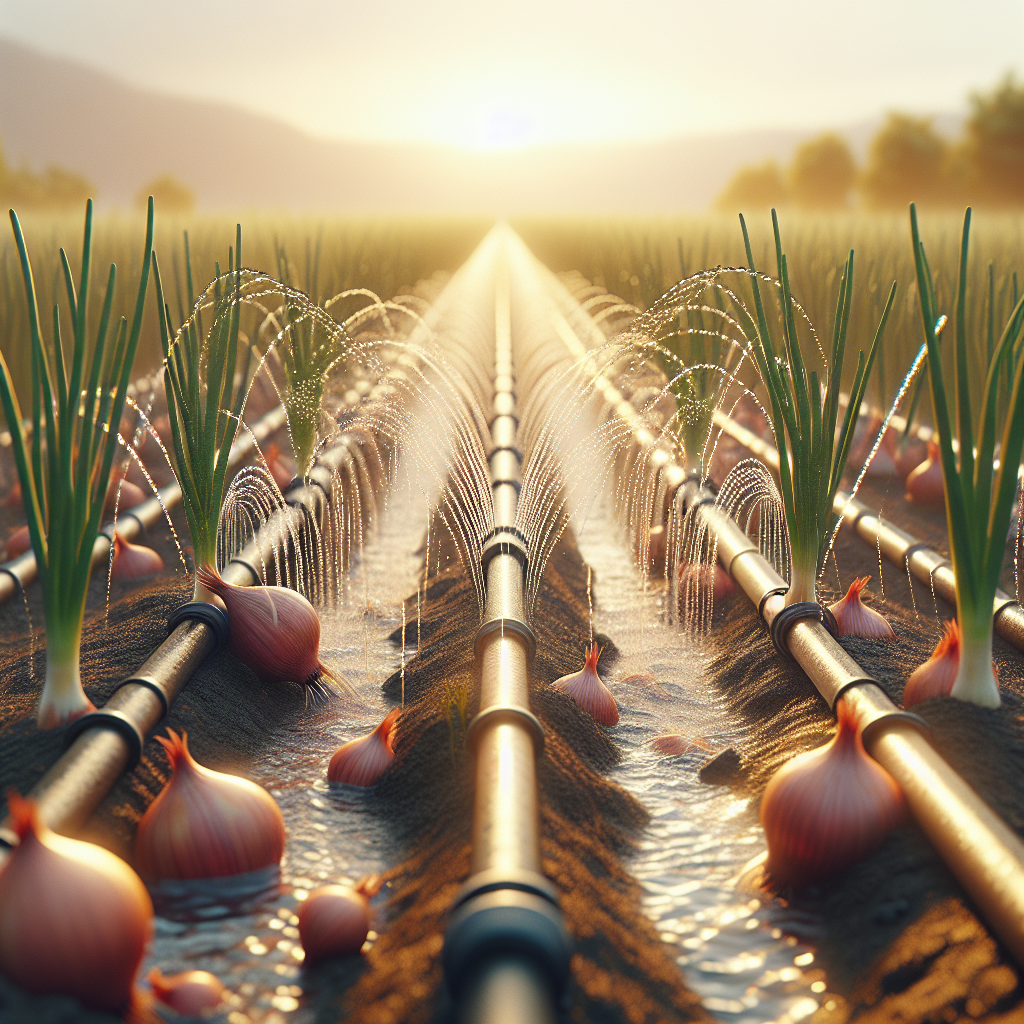Watering onions efficiently through a slow-drip system is a game-changer for farmers looking to maximize their crop yields while conserving water. By implementing this sustainable irrigation method, onion growers can ensure that their plants receive the right amount of moisture at the right time, leading to healthier and more robust crops. In this article, we will explore the benefits of using a slow-drip system for watering onions and provide practical tips on how to effectively manage this irrigation technique for optimal results.
One of the key advantages of using a slow-drip system for watering onions is its ability to deliver water directly to the roots of the plants. Unlike traditional overhead sprinklers that can result in water wastage due to evaporation or runoff, a slow-drip system allows for targeted irrigation, ensuring that each onion plant receives the precise amount of water it needs. This not only promotes better growth and development but also helps prevent diseases such as fungal infections that thrive in moist conditions.
Furthermore, a slow-drip system helps conserve water by reducing overall usage. By delivering water slowly and evenly, this irrigation method minimizes runoff and allows the soil to absorb moisture more effectively. This not only saves precious resources but also reduces costs associated with excessive water consumption. Additionally, by maintaining consistent soil moisture levels, a slow-drip system can help prevent issues such as nutrient leaching and waterlogging, which can negatively impact onion growth and yield.
**Benefits of Slow-Drip System for Watering Onions**
Implementing a slow-drip irrigation system offers several benefits for watering onions efficiently:
1. **Improved Water Efficiency**: Slow-drip systems deliver water directly to the root zone of onion plants, minimizing wastage and maximizing absorption. This targeted approach ensures that each plant receives the right amount of moisture without excess runoff.
2. **Enhanced Plant Health**: By maintaining consistent soil moisture levels, slow-drip systems promote healthier root development in onion plants. This leads to improved nutrient uptake and overall plant growth, resulting in higher yields.
3. **Reduced Water Usage**: Compared to traditional overhead sprinklers, slow-drip systems consume less water due to their efficient delivery method. This not only saves resources but also lowers operating costs for farmers.
4. **Prevention of Diseases**: The controlled application of water through a slow-drip system helps reduce the risk of fungal infections and other diseases that thrive in moist conditions. By keeping foliage dry and focusing on root watering, growers can protect their onion crops from harmful pathogens.
**Tips for Efficient Slow-Drip System Management**
To ensure optimal results when watering onions through a slow-drip system, farmers should follow these practical tips:
1. **Proper Installation**: Start by installing the drip lines or emitters close to the base of each onion plant to ensure direct watering at the root zone. Proper spacing between emitters is essential to provide uniform coverage across the entire growing area.
2. **Regular Monitoring**: Check your slow-drip system regularly to ensure that all components are functioning correctly. Inspect for leaks, clogs, or damaged emitters that may affect water distribution and make necessary repairs promptly.
3. **Adjust Watering Schedule**: Customize your watering schedule based on weather conditions, soil moisture levels, and growth stage of your onion plants. Avoid overwatering by adjusting run times or frequency as needed to prevent waterlogging or nutrient leaching.
4. **Mulch Application**: Use organic mulch such as straw or grass clippings around your onion plants to help retain soil moisture and reduce evaporation. Mulching also provides insulation against temperature fluctuations and suppresses weed growth around your crop.
5. **Fertilizer Management**: Coordinate your fertilizer application with your watering schedule through the drip system to enhance nutrient uptake by onion plants. Consider using liquid fertilizers that can be easily incorporated into your irrigation routine for better absorption.
**FAQ:**
Q: Can I use a slow-drip system for other crops besides onions?
A: Yes! A slow-drip irrigation system is suitable for various crops such as tomatoes, peppers, cucumbers, and lettuce among others.
Q: How often should I water my onions with a slow-drip system?
A: The frequency of watering depends on factors like soil type, weather conditions, and plant growth stage but typically 1-2 times per week is sufficient during normal conditions.
Q: Is it cost-effective to invest in a slow-drip system for my onion farm?
A: While initial setup costs may be higher than traditional methods, the long-term benefits in terms of water savings and increased crop yields make it a worthwhile investment for sustainable farming practices.
In conclusion**, implementing an efficient slow-drip irrigation system is essential for maximizing crop yields while conserving water resources when growing onions** .With proper management techniques such as targeted root watering,** farmers can enjoy healthier plants ,higher yields ,and reduced environmental impacts compared with conventional methods..By following our practical tips And guidelines you too can experience success with watering onions effectively …













